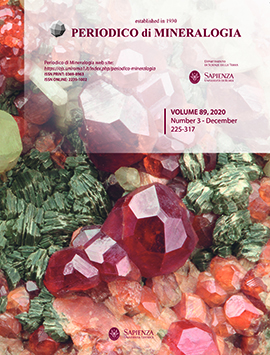Archaeometric constraints on the architectural elements from the submerged installation discovered at the harbor of Lipari (Aeolian Archipelago, Italy)
Keywords:
Lipari Island, harbor installation, Roman age, petrography, SEM-EDX, Tyrrhenian SeaAbstract
Submarine surveys, started in 2008 during the preliminary excavations preceding the construction of a new pier in the port of Lipari Island (Italy), brought to light the presence of large submerged remains, dated to the Roman age, in the base of typological features of the related pottery fragment styles. The archaeological discoveries included the find of structural elements - interpreted in the literature as part of a monumental building - located at the wharf terminal. Four of these structural elements, made up of volcanic rocks, which are now stored at the Lipari Museum, have been examined both from analytical and architectural points of view. To define the provenance of the rocks, petrographic and mineralogical investigations have been performed on the collected samples. The results obtained indicate that the rocks could be traced to the cordierite lava rocks outcropping at Fuardo Valley, in the SW area of the Lipari Island. The use of these rocks as building material was already attested for other artefacts found at Lipari and Messina (Sicily) and at Lamezia (Calabria), but no historical sources refer to any mining activities. However, the presence of working traces observable at Fuardo Valley and Pulera districts and the overall collected information suggest that the cordierite-lava flow was extensively used as stone quarry during historical times. From the stylistic point of view, the studied structural elements made with the Fuardo stone show architectural features that allowed defining them as column bases dating to the Roman Imperial age.Downloads
Published
2020-08-03
Issue
Section
ARCHAEOMETRY and CULTURAL HERITAGE


